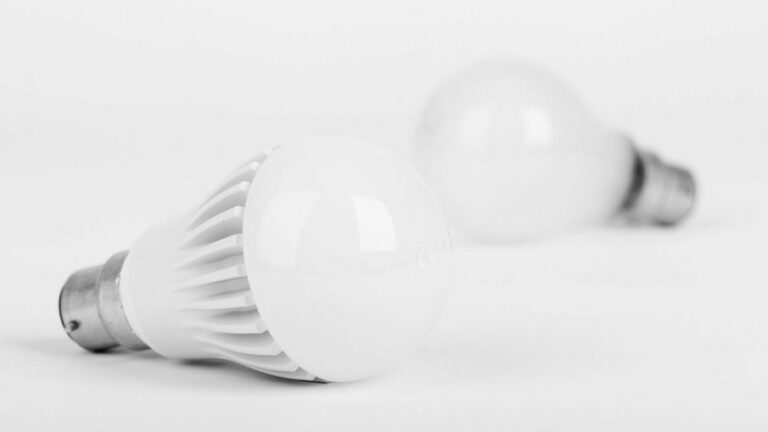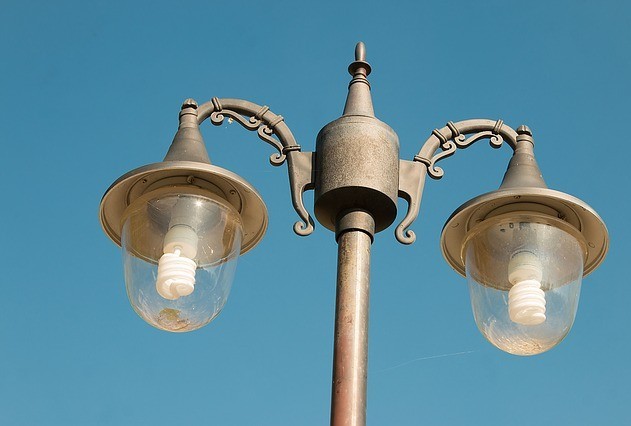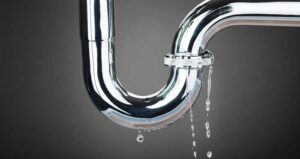With all the talk of saving money, saving energy, go green this or that, sometimes it can all get a bit overwhelming to a point that nothing gets done. However, one simple step can be taken to get started doing all of that – replace the bulbs in your home with LED bulbs. As you will see, it’s not as expensive as you may think…
Table of Contents
What are LEDs?
LED is an acronym for Light Emitting Diode. Simply put, it is a semiconductor that puts out light. They use about one-third less energy than Compact Fluorescent Lamps (CFL’s), and only a fraction of the energy used for incandescent bulbs. They are perhaps the most versatile of all the lamp types – you can customize the color, the amount of light output, and even the beam direction. They radiate less heat than their CFL and incandescent companions, whose heat output makes up about 80% of their energy use!
LED bulbs can be purchased in styles that allow to swap out from incandescents one for one. They put out just as good or better light than incandescents, and have a wider variety of light color – from very warm to ‘daylight’ colors, which will become more of a blue tint.
Cost savings and going green
For anyone who has taken microeconomics in college, the term ‘scarcity’ has rung through the lessons. We are running on limited supplies of everything. Granted, these supplies are still in great abundance, but it doesn’t mean that we can’t look for better ways to conserve what we do have. One good way to do this is to replace the bulbs in your home with LEDs.
Energy savings
Let’s take a typical 60 watt light bulb. Even by today’s regulations, manufacturers are producing these as Halogens and only use 43 watts. That’s about a 28% reduction off the bat, but they still produce more heat than they do light. Switching to a CFL, you will be paying for 13 watts of energy, and a bit less heat than with the incandescents. An equivalent LED bulb, on the other hand, will use only 7 watts of energy and output even less heat than the CFLs. The heat savings alone can help reduce cooling costs, offering even more savings as a byproduct.
Cost savings
Let’s talk bottom line here. According to the EIA (U.S. Energy Information Agency), the average cost for electricity in the United States is over $0.12 per kWh (kilowatt-hour). With the average residential electricity use across the U.S. being close to 910kWh per month, that is an average bill can range anywhere from $81.35 in Louisiana to $202.29 in Massachusetts! Also according to the EIA, lighting used in the home averages close to 10% of the electrical bill each month. So, by doing the math, each home can save an average of $8.65 per month, or close to $104 per year!
It doesn’t seem like a lot, but consider this – an average incandescents costs about $1 and lasts about 1200 hours. A CFL will cost about $2, and last about 8000 hours. An LED, on the other hand, can be purchased as low as $4 each and last 25,000 hours. Figure these costs together with the electricity use over the life of the LED’s, and you will be saving HUNDREDS of dollars per bulb!
Choosing LED bulbs
There are many different styles to choose from that make it easy to match your existing bulbs. LEDs also make it easy to customize the ambience of the room ranging from a very warm look great for living rooms and bathrooms, to very bright and cool that is better for vanity rooms and outdoors.
Type of light fixture
LED bulbs are made to fit in just about any type of fixture. No matter the fixture type – table lamp, ceiling fan, even outdoor lighting – whatever type bulb that you have, there is most likely an LED equivalent. You may find that you can achieve more light with LEDs since they do not release as much heat as incandescent or CFLs do.
Lamp (bulb) base type
There are many types of lamp bases (the end of the bulb that screws into the socket). The most common one is the medium base, which is about 1″ in diameter. This is the one that you will find in almost every light fixture or table lamp. Medium base bulbs are the least expensive type.
Other base types include candelabra, one of the smallest, and is just shy of 1/2″ diameter, and is the type used in most chandeliers, wall sconces, and some ceiling fans. A less common base type is the Intermediate base, which measures in at less than 3/4″ diameter. If you don’t know which one your light fixture uses, simply unscrew the bulb (make sure it is off and cooled down before touching it!), and look at the screw part. The diameter of the screw will tell you the base type.
Wattage and lumens (How bright you want it)
One of the beauties of LED’s is that, as stated earlier, they do not release near as much heat. If you look at a light fixture, you will most likely see a tag that states the maximum wattage bulbs to use. This is referring to incandescent bulbs, and because of the excessive heat, they release when they are on. You can click here to learn more about rated bulbs and other electrical fire hazards. With all that said, with LED’s, you can actually use a bulb that outputs more lumens than the bulbs the fixture is normally rated for. As an example, say a fixture is rated for two 60 watt bulbs. That would be a total of about 1500 lumens, bright but not quite enough to light up some rooms. If you are using LED bulbs, then you could actually use the 100-watt equivalents that output approximately 1200 lumens each, nearly doubling the amount of light and only using up 25 watts of electricity between the two of them. That and virtually no heat!
Customize your lighting
If you feel the room needs to feel a little more relaxing and comfortable, go with a warmer color. If you need a lot of light to see all the little details, go with a cooler light. If you want to control how much light there is, use a dimmer. LED’s can be used to customize your room to whatever your needs may be.
Temperature color
The lower number, the warmer the light. The higher, the more like ‘outdoors’. Example: I use warmer colors in my living room and bedroom because it offers a calm, comfortable light that I can relax in. The color range that I look for is between 2700k through 3300k. The k stands for kelvin – the LED color ranges are actually scaled as temperature ranges.
Most people prefer a very good, bright light in the bath and vanity rooms so they can see the details from shaving, applying makeup, etc. Cooler type light colors are best for this. Color ranges from 5000k through 7200k will do the trick.
Dimmable
LED light bulbs can be purchased as dimmable. These are a little more expensive, but not so much that you will not see the cost savings discussed above. In fact, by dimming the bulbs, you do use a small fraction less energy, which can actually add to the overall savings.
LED lighting installation
LED lighting installation is a simple and straightforward process that can be done by a professional electrician (Don’t DIY this!). The first step in the installation process is to gather all of the necessary equipment, including LED light bulbs, wiring, and a power source. Next, turn off the power to the area where the LED lights will be installed to ensure safety. After that, remove the old light fixtures and replace them with LED-compatible fixtures. Connecting the wiring to the fixtures, your electrician will follow the manufacturer’s instructions and local electrical codes. Finally, screw in the LED bulbs, turn the power back on and test the lights to ensure they are working properly. With these steps, you can fully enjoy the benefits of LED lighting in your home or business.
Start saving energy today!
There is no doubt at all that converting to LED bulbs will save you hundreds, even thousands of dollars over the life of the LED. The ability to customize is always a plus in making your house or apartment a home. Not to mention the lower risk of fire hazards by using low-wattage bulbs, there is no reason not to change to LED bulbs in your home.
Have any questions or would simply like to leave a comment? Please do so below!
Jake is a tool guy – think Tim Allen from Home Improvement but with a much drier sense of humor. He lives in the great state of Ohio and plays the guitar on his downtime. He also spends his time writing on all things tools and DIY-related as this is his passion.










